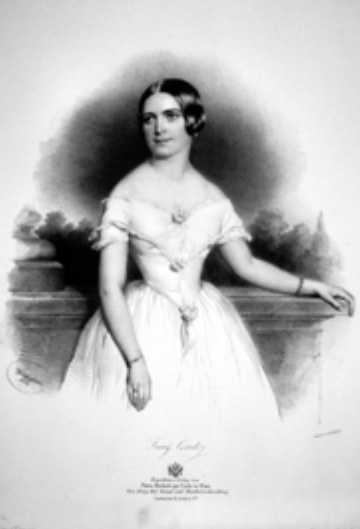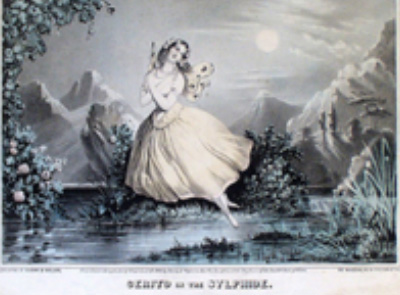Celebrating Francesca Cerrito
We recently asked our dancers to do some research on a famous and important dancer and choreographer named Francesca Cerrito. We requested 3 important facts about her life and work, and our dancers delivered some great work. Have a look!
Amelia Damm
- Fanny was trained at the ballet school of San Carlo Opera House.
- Fanny danced in the Pas de Quatre.
- Fanny was also a choreographer.
Amelia Ragusano
- At just 15 years old she performed at the “Teatro del Fondo”, now the Mercadante Theater.
- She was one of the only women to have distinction as a choreographer in the 19th century.
- She was the daughter of an officer in the Neapolitan army.
Cricket Bailey
- Francesca Cerrito was an Italian ballet dancer and choreographer.
- Francesca was known for her brilliance, strength, and vivacity.
- Francesca was one of the few women in the 19th century to be recognized with talent.
- Francesca Cerrito was born on May 11th 1817 in Naples, Italy, and died May 6th 1909 in Paris, France.
Elyanna Alberto
Hazel Smith-Foley
- Francesco Cerrito was notes for the brilliance, strength, and vivacity of her dancing
- She was one of the few women in the 19th century to achieve distinction as a choreographer.
- In 1845 her choreographic talent was recognized when she presented a ballet of her own composition, Rosida.
Isabel Danyluk
 Born – May 11, 1817, Naples, Italy
Born – May 11, 1817, Naples, Italy
Died – May 6, 1909, Paris, France
Occupation – dancer, choreographer
Francesca Teresa Giuseppa Raffaela Cerrito, also known as Fanny Cerito, was an Italian ballet dancer and choreographer. She was one of the few women choreographers in the 19th century to be recognized for their talent. She was noted for her extreme intelligence, strength, and vivacity. Her works over the years have impacted the community of ballet.
- She was trained by Salvatore Taglioni at the ballet school of San Carlo Opera House. Many believed that she had a future as a ballet star after she made her first short stage appearance in 1832. Around 1836, many more people recognized her talent after she was in the ballet, Vienna, presenting most of her own dances that she choreographed.
- Finally around 1838, she became a principal dancer at La Scala in Milan, Italy. After this, from 1840-1848, she danced at Her Majesty’s Theatre in London. The people in London strongly respected her. Her dancing was a very cheerful and playful style.
- She danced in many various ballets, including Alma (1842), Ondine (1843), Pas de quatre (1845), Lalla Rookh (1846), Le Jugement de Paris (1846), Les Éléments (1847), and Les Quatre Saisons (1848). Along with this, she choreographed her own ballet, Rosida, in 1845, in which she performed the lead role.
- After many years of dancing, her last performance occurred in 1857. She later went on to retire to live the rest of her life in Paris, France. Then on May 6, 1909, she passed away.
Maria Auriemma
Olivia Mermegas
- Fanny was an Italian ballet dancer and choreographer and she was a ballerina noted for the brilliance, strength, and vivacity of her dancing.
- Her first stage appearance was in 1932 and she gained recognition immediately, in 1836-1837 her fame started to spread beyond Italy.
- She was also one of few women in the 19th century to be recognized for her talent as a choreographer.
Raffaela Danyluk
 Francesca Teresa Giuseppa Raffaela Cerrito was born on May 11, 1817 in Naples Italy. She commonly went by the nickname “Fanny”, and inspired the ballet community for all of the remarkable impacts she had on dance.
Francesca Teresa Giuseppa Raffaela Cerrito was born on May 11, 1817 in Naples Italy. She commonly went by the nickname “Fanny”, and inspired the ballet community for all of the remarkable impacts she had on dance.
- Fanny Cerrito was an Italian ballet dancer and choreographer. She was one of the few women to be recognized as a talented choreographer in the 19th century.
- Francesca trained all the time and was always dedicated to becoming an amazing ballerina. When she was 15, Fanny was ranked as a solo dancer. She trained at the ballet school of the San Carlo Opera house and was mainly taught by Salvatore Taglioni.
- In 1845, her talent for being a choreographer was recognized when she presented Rosida, her own ballet.
- Fanny Cerrito was a well known dancer at Her Majesty’s Theatre and the people of London loved her.
- Throughout her dance career, her pas de deux partner was mainly Arthur Saint-Léon and a few years later they were married. However, later they separated both with marriage and as ballet partners.
Sarah Weiner
- In 1845, Cerrito’s choreographic talent was recognized when she presented a ballet of her own composition, Rosida.
- Between 1838 and 1840, she was a principal dancer at La Scala in Milan, that attracted even more attention to her outstanding dancing.
- Worked with ballet master, Jules Perrot, who produced a series of successful ballets for her. Examples are, Alma, Ondine, and Lala Rookh. Perrot also had multi-stellar works featuring Cerrito. Examples of those are: Pas de Quatre, Le Jugement de Pâris, Les Éléments, and Les Quatre Saisons.
Sophia Weiner
- She made it big in the 19th century by being one of the few women known for distinction as a choreographer.
- She trained under the supervision of Salvatore Taglioni at the ballet school of the San Carlo opera house in Italy.
- She gained her attention out of Italy, Vienna, by showing self choreography. Her attention grew as she danced with La Scalia in Milan.



